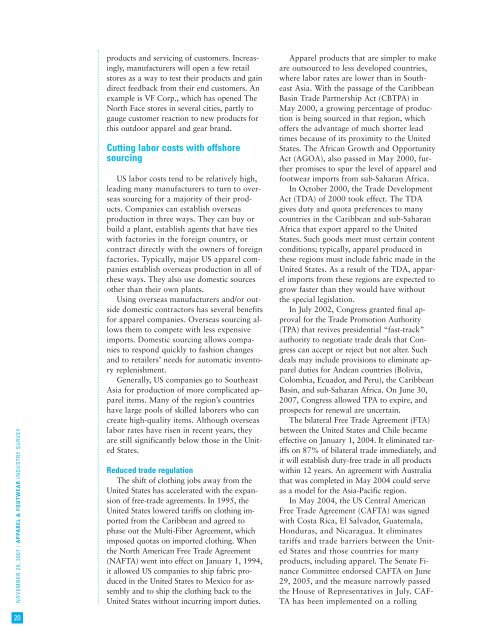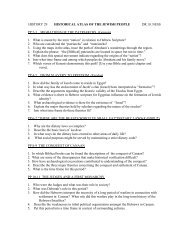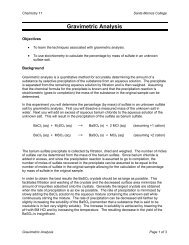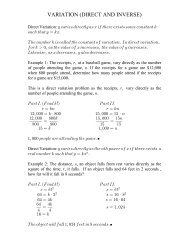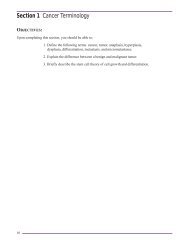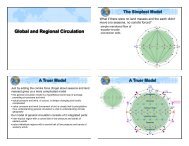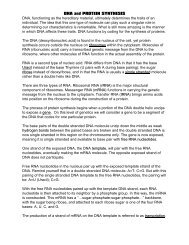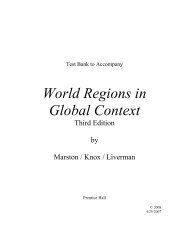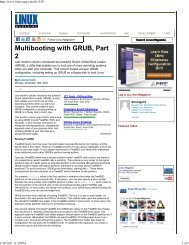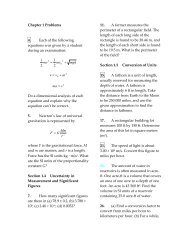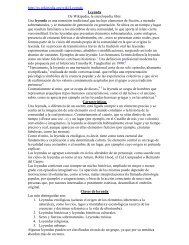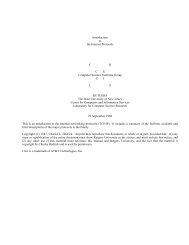Create successful ePaper yourself
Turn your PDF publications into a flip-book with our unique Google optimized e-Paper software.
NOVEMBER 29, 2007 / APPAREL & FOOTWEAR INDUSTRY SURVEY<br />
20<br />
products and servicing of customers. Increasingly,<br />
manufacturers will open a few retail<br />
stores as a way to test their products and gain<br />
direct feedback from their end customers. An<br />
example is VF Corp., which has opened The<br />
North Face stores in several cities, partly to<br />
gauge customer reaction to new products for<br />
this outdoor apparel and gear brand.<br />
Cutting labor costs with offshore<br />
sourcing<br />
US labor costs tend to be relatively high,<br />
leading many manufacturers to turn to overseas<br />
sourcing for a majority of their products.<br />
Companies can establish overseas<br />
production in three ways. They can buy or<br />
build a plant, establish agents that have ties<br />
with factories in the foreign country, or<br />
contract directly with the owners of foreign<br />
factories. Typically, major US apparel companies<br />
establish overseas production in all of<br />
these ways. They also use domestic sources<br />
other than their own plants.<br />
Using overseas manufacturers and/or outside<br />
domestic contractors has several benefits<br />
for apparel companies. Overseas sourcing allows<br />
them to compete with less expensive<br />
imports. Domestic sourcing allows companies<br />
to respond quickly to fashion changes<br />
and to retailers’ needs for automatic inventory<br />
replenishment.<br />
Generally, US companies go to Southeast<br />
Asia for production of more complicated apparel<br />
items. Many of the region’s countries<br />
have large pools of skilled laborers who can<br />
create high-quality items. Although overseas<br />
labor rates have risen in recent years, they<br />
are still significantly below those in the United<br />
States.<br />
Reduced trade regulation<br />
The shift of clothing jobs away from the<br />
United States has accelerated with the expansion<br />
of free-trade agreements. In 1995, the<br />
United States lowered tariffs on clothing imported<br />
from the Caribbean and agreed to<br />
phase out the Multi-Fiber Agreement, which<br />
imposed quotas on imported clothing. When<br />
the North American Free Trade Agreement<br />
(NAFTA) went into effect on January 1, 1994,<br />
it allowed US companies to ship fabric produced<br />
in the United States to Mexico for assembly<br />
and to ship the clothing back to the<br />
United States without incurring import duties.<br />
Apparel products that are simpler to make<br />
are outsourced to less developed countries,<br />
where labor rates are lower than in Southeast<br />
Asia. With the passage of the Caribbean<br />
Basin Trade Partnership Act (CBTPA) in<br />
May 2000, a growing percentage of production<br />
is being sourced in that region, which<br />
offers the advantage of much shorter lead<br />
times because of its proximity to the United<br />
States. The African Growth and Opportunity<br />
Act (AGOA), also passed in May 2000, further<br />
promises to spur the level of apparel and<br />
footwear imports from sub-Saharan Africa.<br />
In October 2000, the Trade Development<br />
Act (TDA) of 2000 took effect. The TDA<br />
gives duty and quota preferences to many<br />
countries in the Caribbean and sub-Saharan<br />
Africa that export apparel to the United<br />
States. Such goods meet must certain content<br />
conditions; typically, apparel produced in<br />
these regions must include fabric made in the<br />
United States. As a result of the TDA, apparel<br />
imports from these regions are expected to<br />
grow faster than they would have without<br />
the special legislation.<br />
In July 2002, Congress granted final approval<br />
for the Trade Promotion Authority<br />
(TPA) that revives presidential “fast-track”<br />
authority to negotiate trade deals that Congress<br />
can accept or reject but not alter. Such<br />
deals may include provisions to eliminate apparel<br />
duties for Andean countries (Bolivia,<br />
Colombia, Ecuador, and Peru), the Caribbean<br />
Basin, and sub-Saharan Africa. On June 30,<br />
2007, Congress allowed TPA to expire, and<br />
prospects for renewal are uncertain.<br />
The bilateral Free Trade Agreement (FTA)<br />
between the United States and Chile became<br />
effective on January 1, 2004. It eliminated tariffs<br />
on 87% of bilateral trade immediately, and<br />
it will establish duty-free trade in all products<br />
within 12 years. An agreement with Australia<br />
that was completed in May 2004 could serve<br />
as a model for the Asia-Pacific region.<br />
In May 2004, the US Central American<br />
Free Trade Agreement (CAFTA) was signed<br />
with Costa Rica, El Salvador, Guatemala,<br />
Honduras, and Nicaragua. It eliminates<br />
tariffs and trade barriers between the United<br />
States and those countries for many<br />
products, including apparel. The Senate Finance<br />
Committee endorsed CAFTA on June<br />
29, 2005, and the measure narrowly passed<br />
the House of Representatives in July. CAF-<br />
TA has been implemented on a rolling


